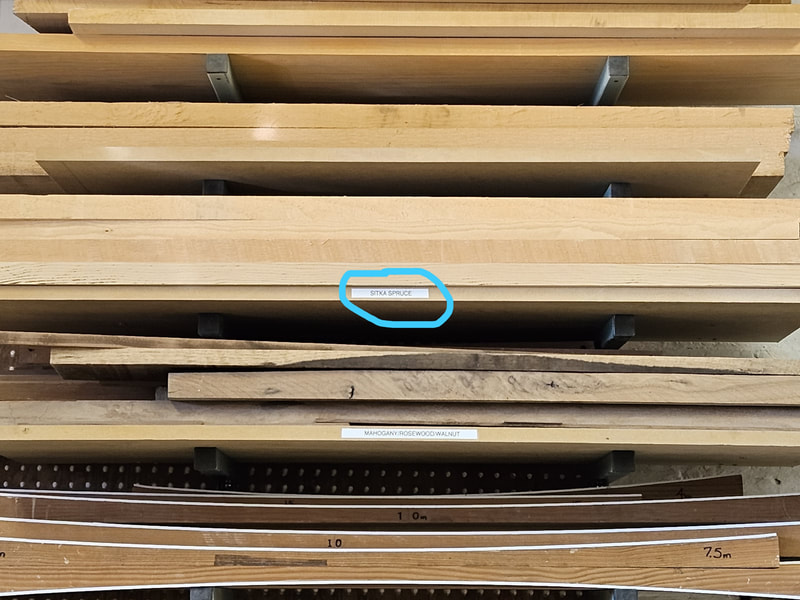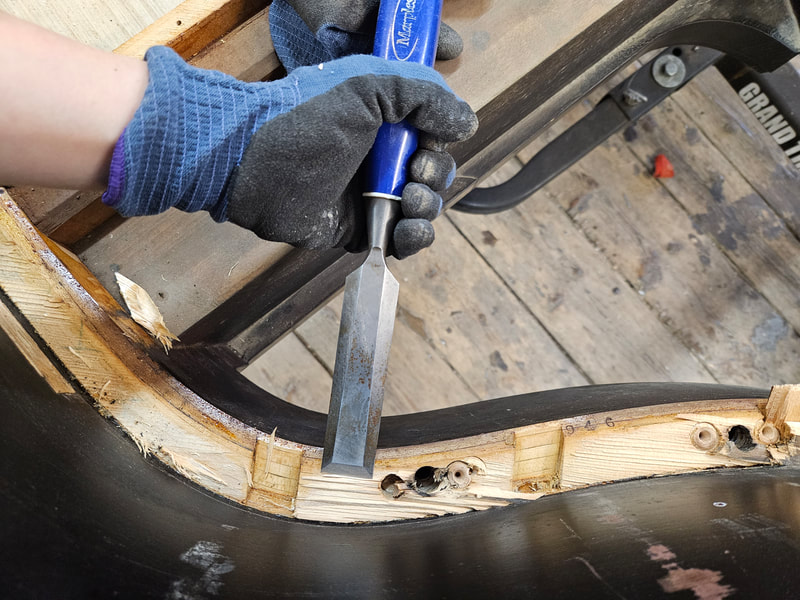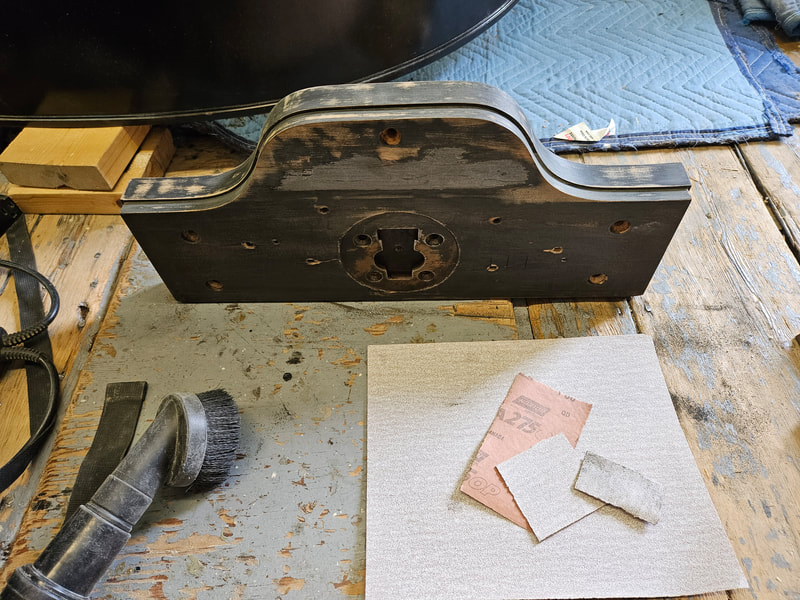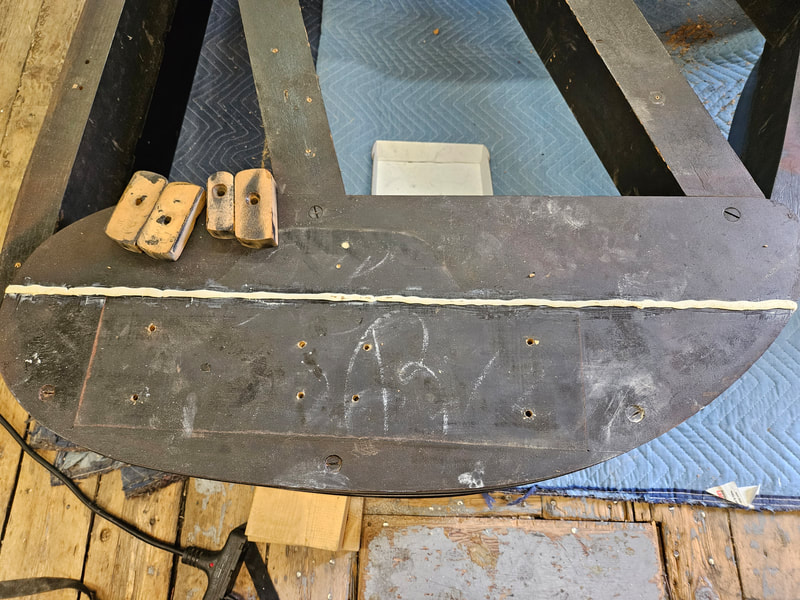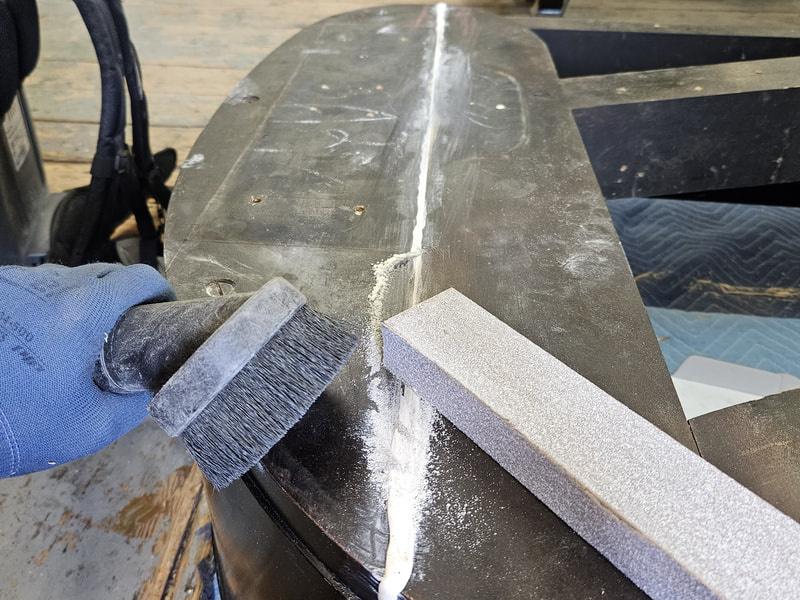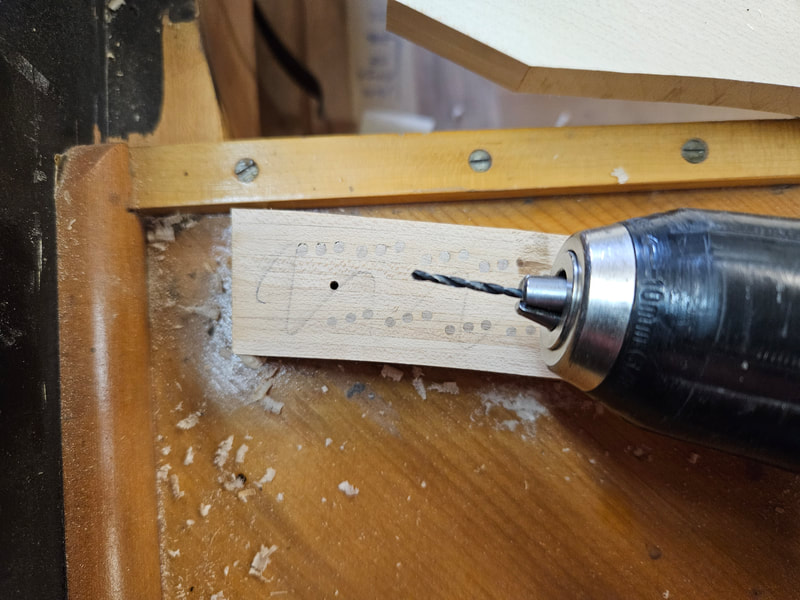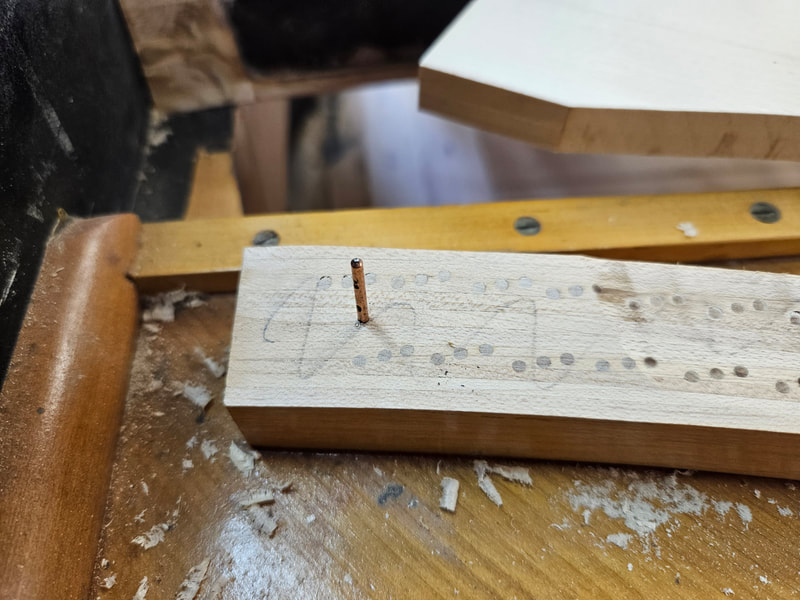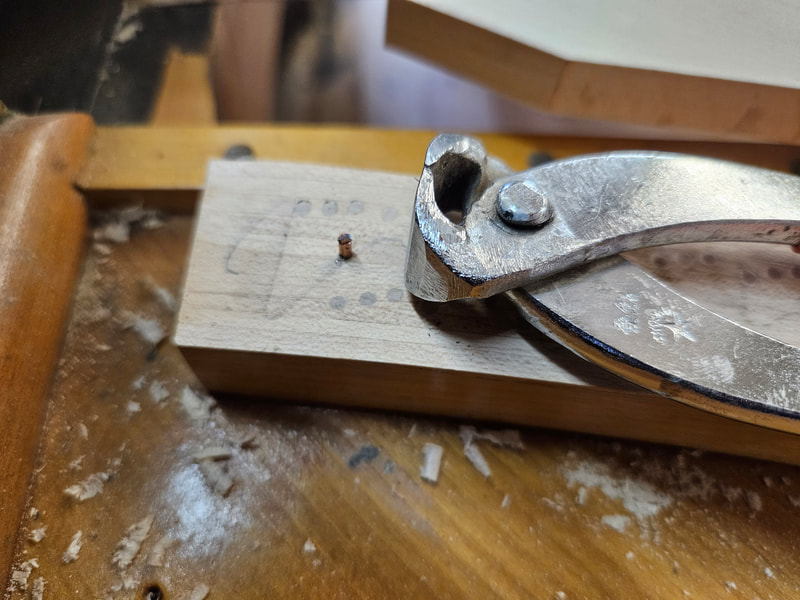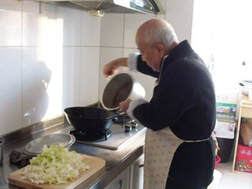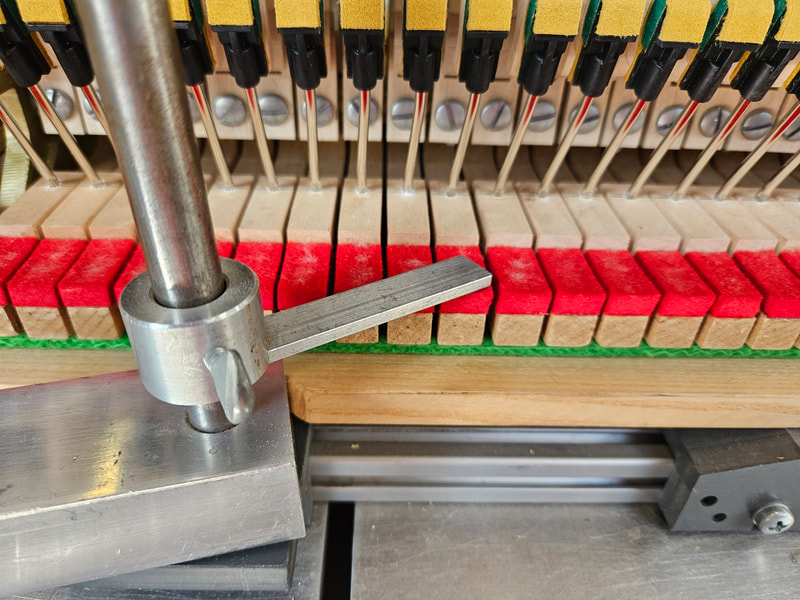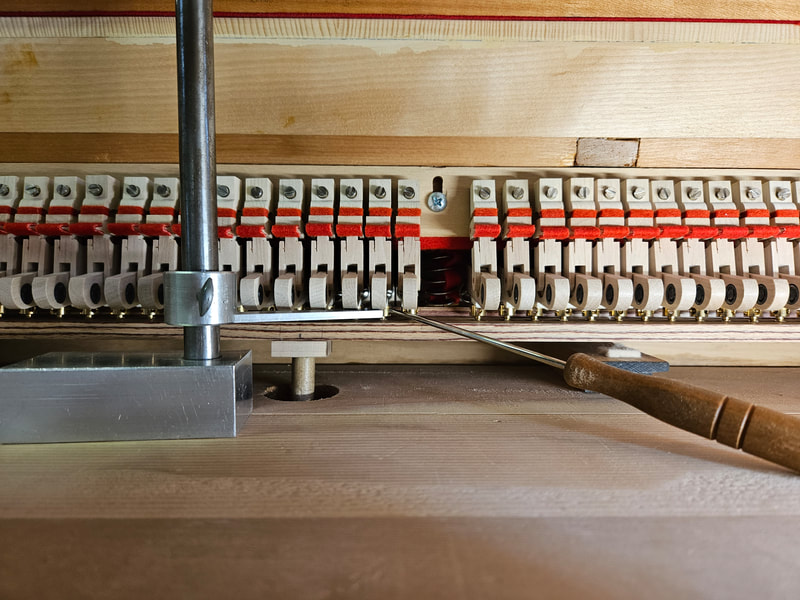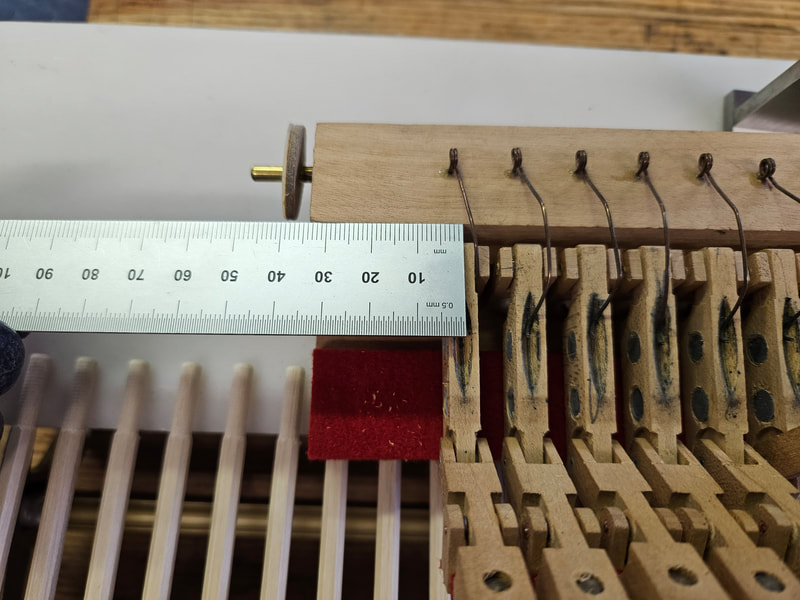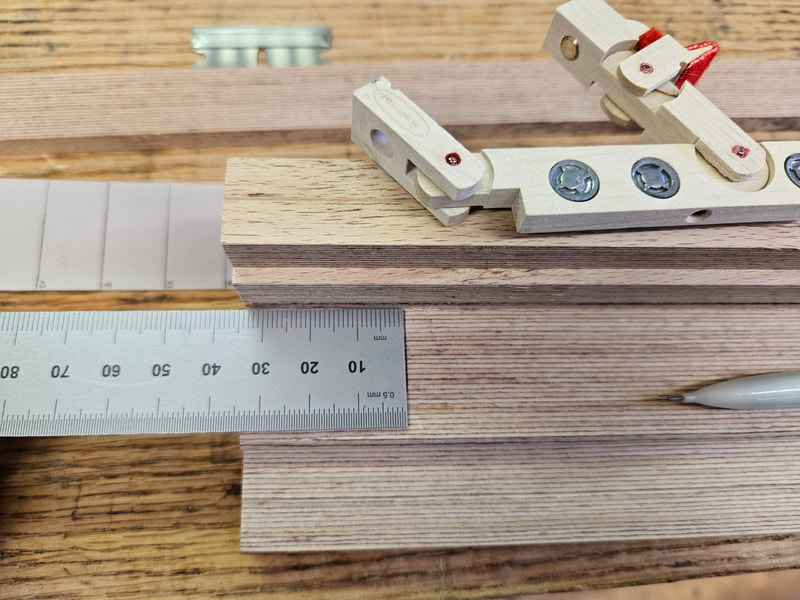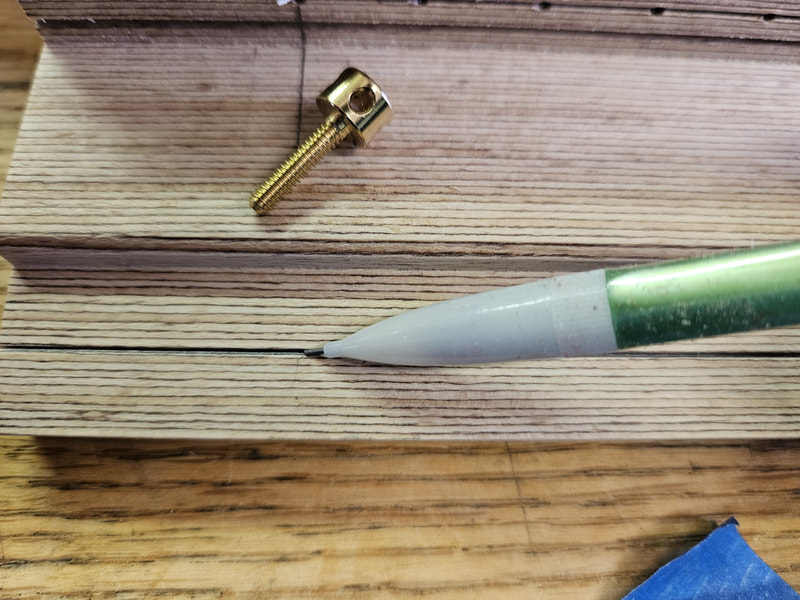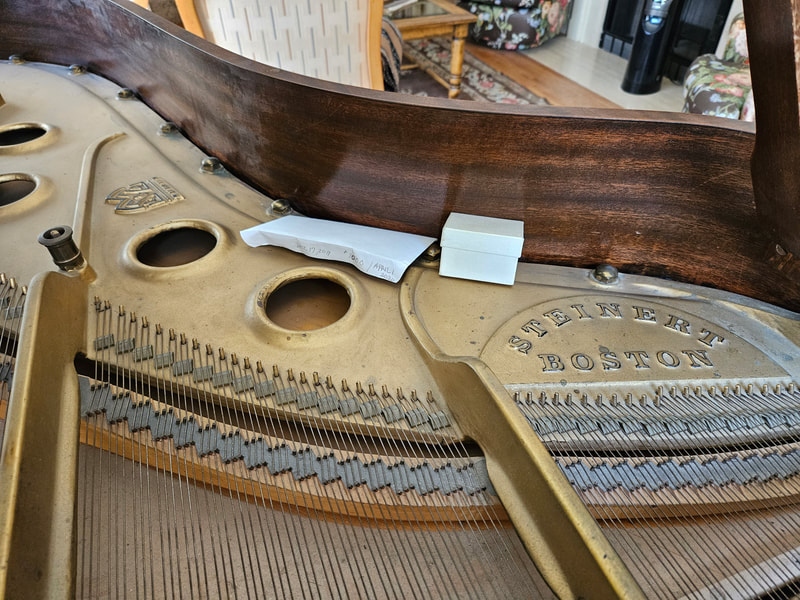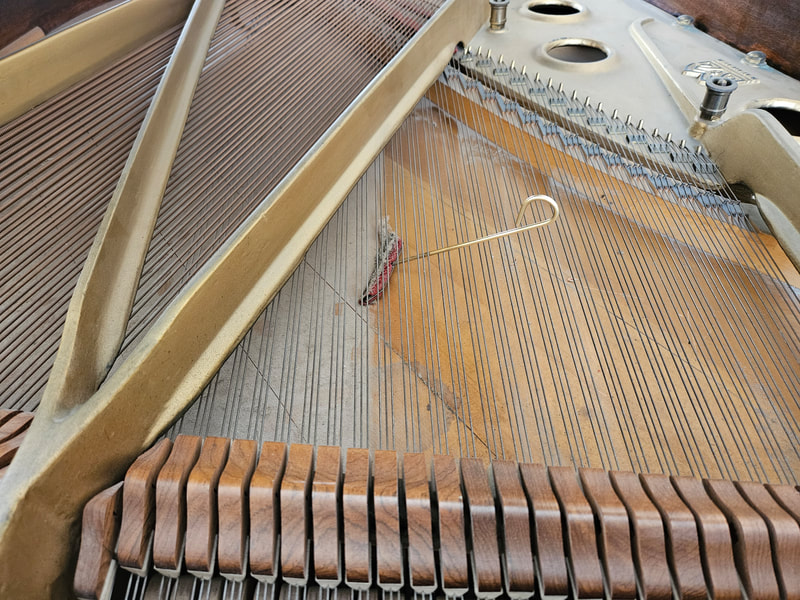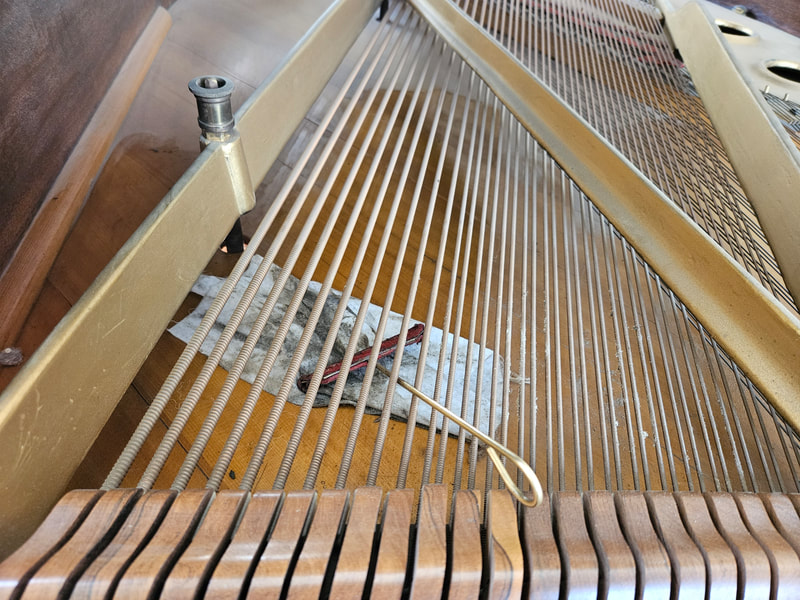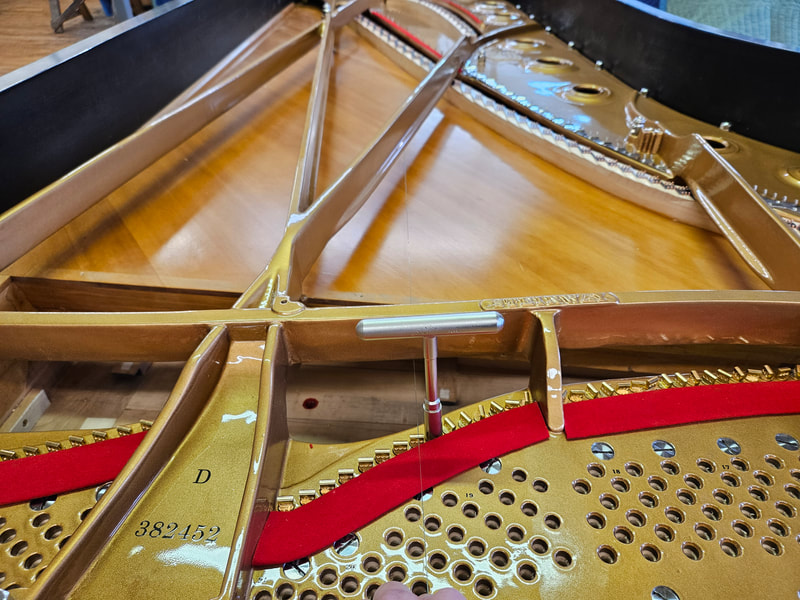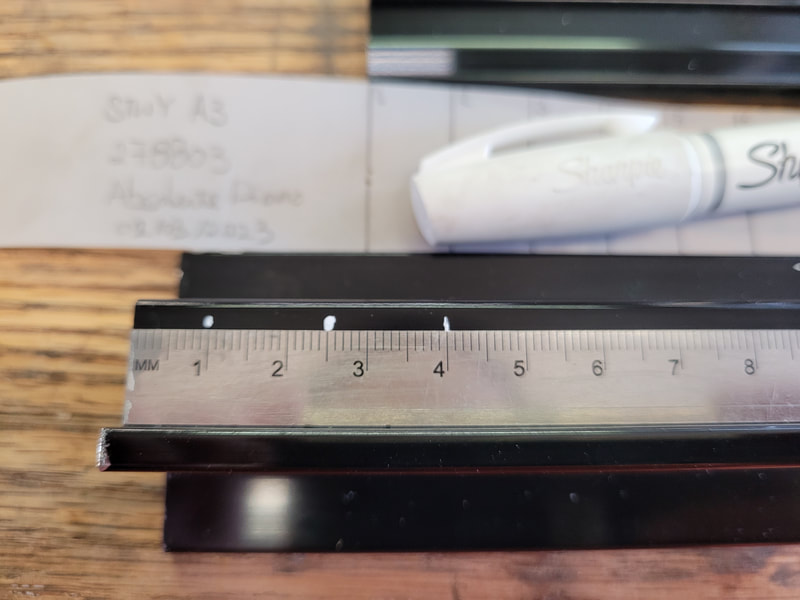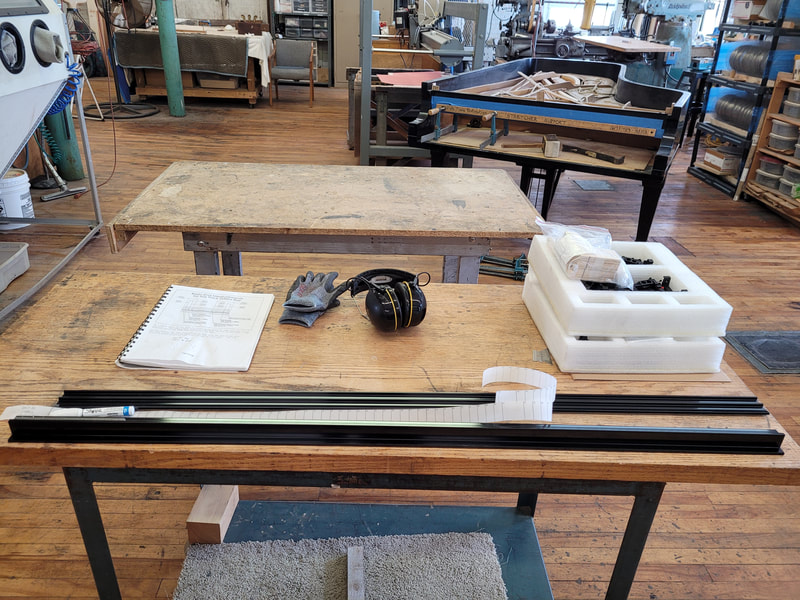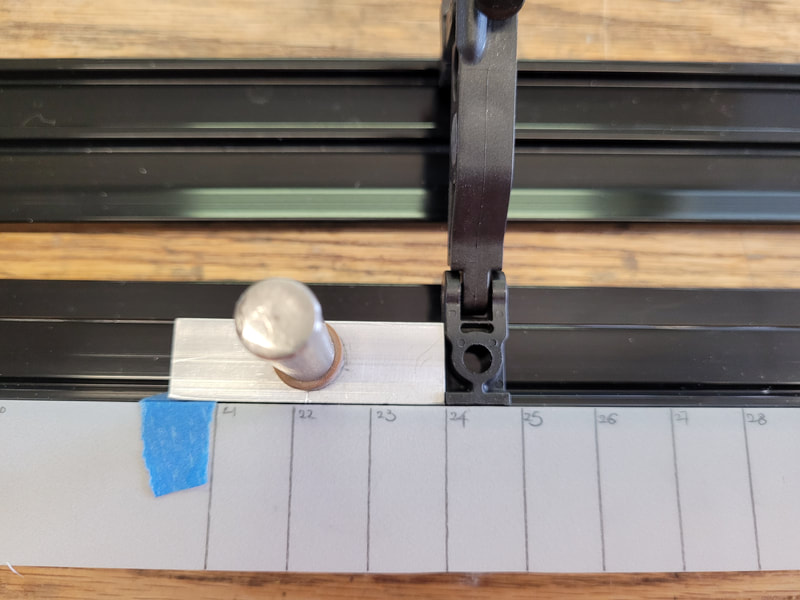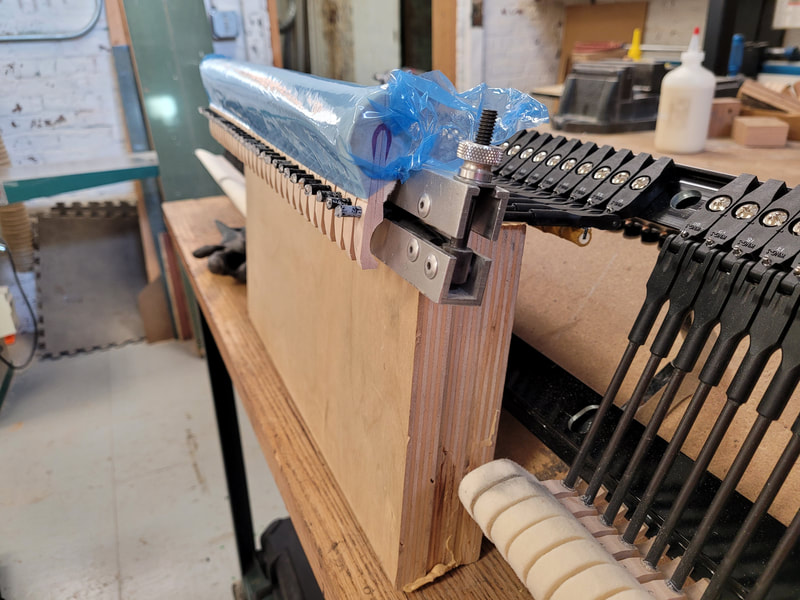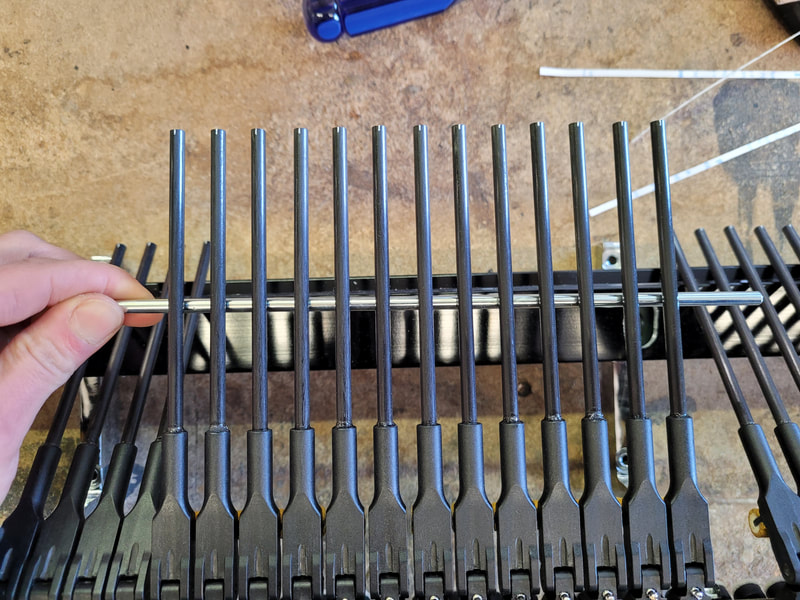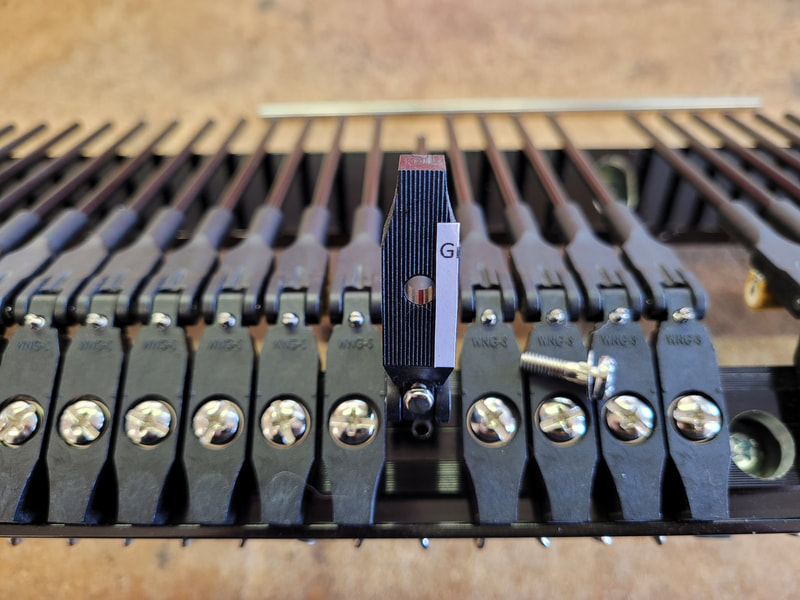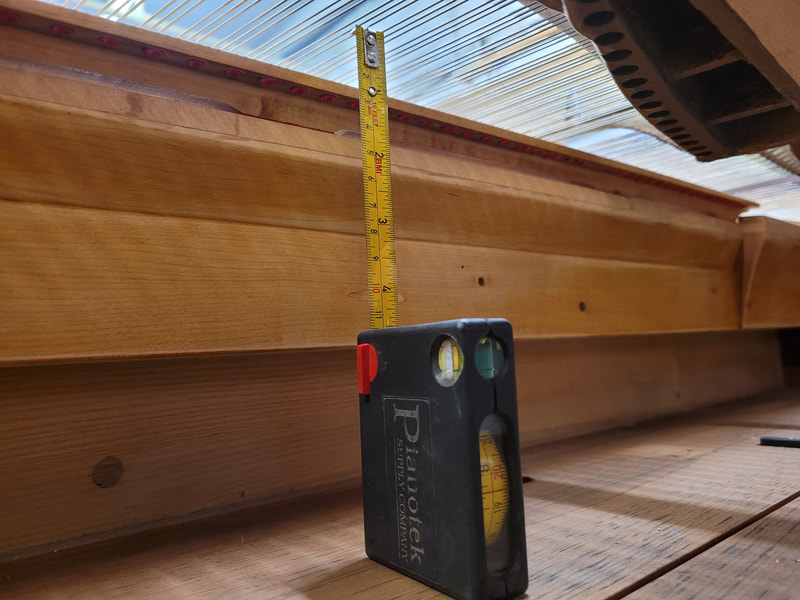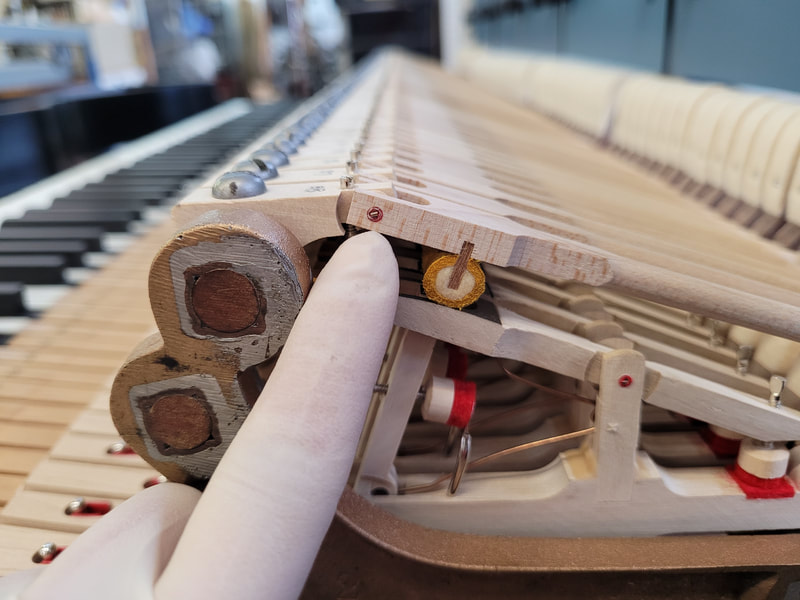|
This working process was instructed by the shop owner Mr. Jude Reveley. The shop owner designed the species, length, width, radius, etc. of the new ribs on the Steinway L being rebuilt. We are going to have the ribs made today. According to the data sheet, pick the wood - Sugar Pine for rib # 1, Sitka Spruce for rib # 2-11. Discard wood that has flaws, such as splits and knots. When selecting wood, make sure each rib is at least 2mm taller, 4mm wider, and 10cm longer than spect. The ribs will sit on soundboard with grain vertically placed. All ribs are quarter sawn.
There are quite a bit of wood residue left on inner rim after soundboard removal. We can use either sanding or teaming method to clean the inner rim surface. Use sanding when inside of outer rim is not going to be refinished. Use steam if it is going to be stripped and refinished. The first step of either method is to chisel the wood residue as clean as possible, leaving minimum amount of wood to be sanded or steamed off.
The tail of piano was cracked due to environment and released tension after strings were taken off. The shop owner suggested using of WoodEpox to fill the crack. Before filling, the bottom board, where the tail leg is attached, is taken off. The filling was done on day one, then sanded on day two when it is completely dried. Note: leave the filling higher than the surface because it will shrink when it dries. Turn vacuum on while sanding WoodEpox. It is very powdery, possibly bad for the lung, possibly very bad.
The go-bar method is a trial for now. Before, we used machine screws to fasten bridge cap to root. But to use machine screws, many holes are dilled on the cap, which weakens the bond. The go-bar method saves time on dry-fitting, also creates a stronger glue joint.
This piano does not require a new soundboard. The bridge cap was removed with a router; bridge pin holes were plugged; and surface smoothed with a power plane. Bridge cap was made from hard maple, milled to match original bridge height plus 3mm additional thickness to make room to set down-bearing later on. To grandpa Jianzhong Wang (1927-2018), veteran of many battles, whose spirit was around during the process, who taught his children and grandchildren to be honest, and hard working.
This piano hasn't been serviced for some years. One would assume dust bunnies gather on keybed and enclosed pedal area. Carefully exam the piano, see how parts are going to be taken off. Every piano is different. If needed, take pictures of disassembly process. Remove keys makes it easier for a thorough cleaning.
The action is redesigned by the shop owner Mr. Jude Reveley. The key height is increased to 66mm from about 64mm while the fallboard still fits above keys under stretcher. Somehow after first pass of key leveling, they are pivoting sluggishly on balance pins. But balance holes were loose enough before the top stack is on. The problem is that, with the increased key height, the balance pins are leaning too much forward in balance holes, binding the holes as well. By tapping them back, the keys are eased.
This is a tribute to all my mentors from North Bennet Street School, Mr. David Betts who contributed his life to this trade and his beloved apprentices. Today is Mother's Day. Best wishes and lots of love to Debbie and Emily, my caring mentors who support us from the beginning and there seems to be no end for it. This process is taken from two backaction replications. Personally, it is still a new skill to be refined. Compare to WNG Aluminum backaction, we found Renner's wooden system more consistent and with less flaws. Lay out the parts, check if anything is missing from the box, and read assembly process from manufacture. First, determine location for the first underlever. On old damper tray, measure distance from the bass end to center of note 1 underlever, transfer measurement onto new damper tray. Again, on old tray, measure distance from bass end to bass side of note 1 underlever, transfer on to new tray. Position new underlever flange onto new tray, determine the most accurate position according to the two marks, then mark it down. The new damper tray comes with the screw line grooved. Use a pencil to mark along the groove to make it more visible for easy working process.
When damper wire is not riding against guide rail bushing (not touching one side of the bushing), the damper head is likely to shake or move irregularly going up and down. This can be adjusted in the piano by bending damper wire. The bottom bend is for spacing, the top bend is for squaring. The top and bottom parts of the wire shall be parallel. The video is what I learned so far these years. As time goes by in the future, hopefully personal damper skill could improve.
Usually older pianos are found covered by dust on soundboard and plate. I opened the lid to exam how dusty this Chickering was only to find hidden cash and jewelries under lid on plate. The owner complete forgot they were there. We laughed hard. The soundboard cleaning tool can be found online like here. The design is to have something going through the strings to clean soundboard surface. A vacuum is handy here to suck in dust on cleaning tool.
First align agraffes. Run a fish line or plastic thread from bridge pins to tuning pins, turn agraffes till tight and top surface 90 degrees to the line. Set up for stringing. We use spools of strings of different sizes from # 21 to #13. Place soundboard protection in case strings scratch the soundboard. Jack up pinblock with pinblock support like this.
Read WNG manual carefully, draw a plan on the aluminum rail including mounting location, first flange screw hole, and first underlever screw hole. Take out the scale stick and tape on the main rail. Use the punch provided by WNG, triple check the position of the punching point, not to place it backwards. Point the single line mark on the punch to accurately located scale stick. Punch with a rubber mallet.
The trimming stand is homemade by shop owner. The action stack is screwed down, then raised to an angle to be easily worked on. Use a clamp to fasten one section of hammer shanks so they won't move everywhere during trimming process. Lift this section with a block. Also protect hammer felt with tape or plastic wrap.
Before hanging the hammers, the shanks need to be traveled or make sure they rotate straight up and down without tilting to the left or right. The WNG composite shanks reflex light crazily. Marking the tips of shanks with a white sharpie helps seeing the irregularly moving ones. lift shanks up and down with a long rod and watch. If shank is traveling to the right, put a shim on the right side on bottom of flange, then check, vise versa. The shims here are cut from sticky labels.
Data needed before opening hammer package: (1) String height at end of each section plus mid note at tenor section since this section is very long. The tenor section on this Mason is from note 21 to note 51. String height at note 35 is also recorded. (2) String angle along hammer strike line. Hammers will be drilled at an angle so the hammer top surface is parallel to the strings. (3) Hammer flange center pin height. Hammer bore = String height - Flange center pin height
|
Archives
February 2024
|

